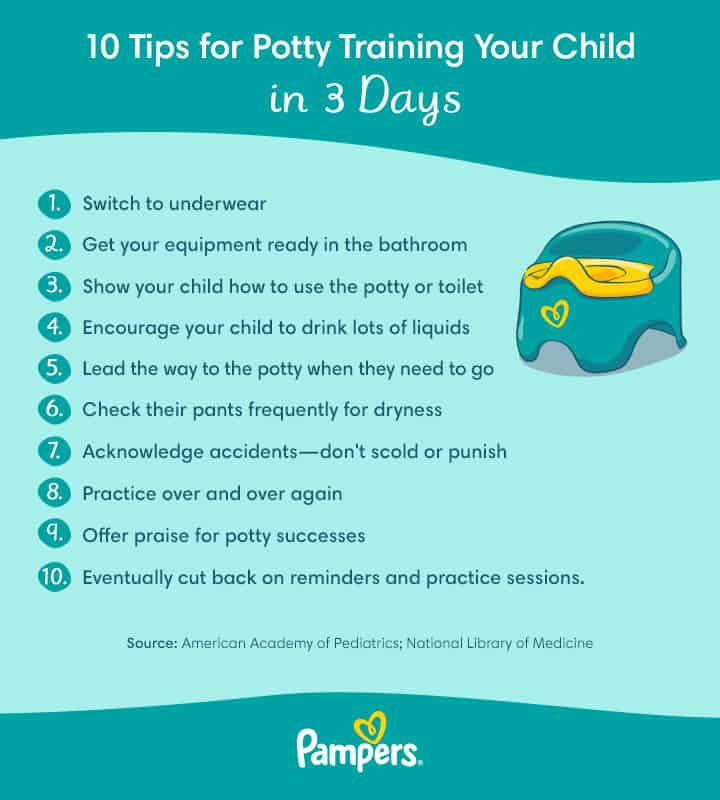Master the 3 Day Potty Training Method: A Complete Guide for Parents
Hello awesome parents! Are you ready to wave goodbye to diapers and welcome the potty with open arms? Well, you’ve found the right spot! Introducing the 3 Day Potty Training Method, a fast-tracked way to get your little one using the potty like a champ in no time. And guess what? We’re here to guide you through every step of the way. So buckle up, because here starts your child’s potty proficiency journey!
What is the 3 Day Potty Training Method?
The 3 Day Potty Training Method is a focused and strategic approach to potty training your child over the course of just three days. Yes, you read that right – just 72 hours! The key lies in consistency, positive reinforcement, and a little splash of patience.
Now you might be thinking, “Can it really be done?” And we’re here to tell you, with a bit of preparation and a lot of enthusiasm, you can absolutely triumph.
Day 1: Preparation and Setting the Scene
Preparation is your best pal when it comes to the 3 Day Potty Training Method. Before you begin, gather your supplies. You’ll need:
- A child-sized potty or a special toilet seat for the big toilet
- Easy-to-remove clothing for your child (think training pants or just plain undies!)
- Liquid courage (for your kiddo, not you!) – juices, water, milk
- Snacks that can help…um, keep things moving
- Potty training charts and fun stickers
- A timer to remind both you and your tot about bathroom breaks
It’s all about making your child feel comfortable and excited about this big change. Show them their new potty, talk about it – make it their new best buddy!
Day 2: Getting Down to Business
Alright! Day 2 is when the real magic happens. You’ve set the stage, and now it’s showtime. Keep a light and breezy atmosphere – sing songs, play games, and read books all about – you guessed it – going potty. Reinforce the idea that using the potty is a big kid move and something to be proud of.
Don’t forget; accidents will happen. It’s part of the process. Stay calm and handle them with a smile – your little one is doing their best.
Day 3: Reinforcement and Encouragement
By Day 3, you might start seeing some progress, or you might not. Either is okay! Some kids catch on quick, while others need a bit more encouragement. Keep the routine steady – offer plenty of liquid, regular potty breaks, and loads of positive reinforcement.
Also, it’s essential to venture out briefly (think mini errands) with your child. Short trips help them learn to hold it and signal when they need to go in different environments.
Key Tips for Success in 3 Day Potty Training
Here are some golden nuggets of wisdom to keep in mind:
- Consistency is King: Stick to your schedule. Regular prompts and potty breaks can help your child understand what’s expected.
- Positive Vibes Only: Celebrate the successes and shrug off the accidents. Keep the mood upbeat and stress-free.
- Patient Pants: Rome wasn’t built in a day, and some kids won’t be potty trained in three. Be patient and keep at it.
- Stay Present: This method requires your full attention. Clear your calendar and focus on your little one for these three days.
There you have it, the starting blocks for your potty training sprint! Remember, each child is different, so tailor the training to fit your child’s individual needs. Stay tuned for even more detailed insights, troubleshooting tips, and encouragement to help you cross the potty training finish line with flying colors!
Potty training might just be one of those parenting challenges that’s sprinkled with a bit of humor and a wealth of memory-making. Enjoy the process, and keep your eye on the prize – your little one’s potty independence is on the horizon!

5 Things Parents Should Know in Preparing for the 3 Day Potty Training Method
Before you take the plunge into the potty training pool, there are a few things you should keep top of mind. These five insights will set the foundation for a smooth sailing potty training adventure:
- Mental Prep is A-Must: Before starting the 3 Day Potty Training blitz, ensure your child shows signs of readiness. They should be able to follow basic instructions, communicate when they need to go, and have an interest in the potty. Your child’s readiness is critical to the method’s effectiveness.
- Choose the Right Timing: Timing is everything! Select a stretch when you have no other major commitments. Avoid times of big changes, like moving houses or welcoming a new sibling. Your focus and your child’s comfort are essential during this transition.
- Layout the Groundwork: Talk to your child about potty training a few days before you start. There are wonderful children’s books and videos out there that can help make the concept familiar and fun. Let this be a thrilling new chapter they can’t wait to begin!
- Get the Gear: Along with the basics (a potty chair and training pants), consider some extra gadgets like a step stool for the big toilet and fun soap for hand washing. And of course, arm yourself with lots of cleaning supplies — things might get messy!
- Potty Training Party: Make the start of 3 Day Potty Training a celebration! A “Goodbye Diapers” ceremony can help your child feel excited about moving on to undies. It turns potty training into a special event rather than a dreaded task.
Armed with these tips and your positive attitude, you’re already on the path to potty training success. Remember, prepare for a marathon, not a sprint, and your little one will be potty trained at their own pace. You’ve got this!
Detailed Insights for Each Potty Training Day
Let’s dive into what each day might look like:
Day 1: Potty Introduction
Welcome to the world of potty training! Introduce your child to their potty with joy and enthusiasm. Let them decor it with stickers or markers. The more ownership they feel over their potty, the more likely they are to use it. Explain that we’re saying bye-bye to diapers and hello to big-kid undies. Answer their questions with patience and love, keeping the mood light and positive.
Day 2: Potty Practice
Day 2 is crucial. Toddlers learn through repetition, so consistent potty breaks are key. Encourage drinking lots of fluids to create plenty of opportunities for practice. Cheer every attempt, even if the potty does not catch anything just yet. Each sit on the potty is a step closer to understanding their body signals.
Day 3: Adventure and Adaptation
On the third day, take your first short trips outside the house. A quick pop to the park or a short story time at the library can be great tests. This is also a chance to practice using public restrooms or potty seats on-the-go.
After all this, don’t be discouraged if your child still experiences occasional accidents, even after the three days are up. Remember, the 3 Day Potty Training Method is a kickstart, not an instant fix.
Reflect on the experience and keep encouraging your child in the following days and weeks. Potty training is an ongoing process that sometimes requires parents to readjust their strategies as they learn more about their child’s unique habits and cues.
Troubleshooting Common Potty Training Challenges
You might find yourself facing some common hurdles. Here’s how to leap over them gracefully:
- If your child is afraid of the potty, take a break, and then gently reintroduce it. Remember, fear is a big emotion for a little person.
- Resistance can be a sign of asserting independence or an indication that your child isn’t quite ready. Give it some time and try again in a few weeks.
- Accidents are both normal and expected. Don’t show disappointment. Instead, calmly clean up and encourage another try later.
- Constipation can rear its head due to the new changes. Keep your child hydrated and ensure their diet has plenty of fiber.
Remain adaptable, showering your toddler with love and encouragement as they master this new skill. It’s quite the feat! With your support and the clever tricks of the 3 Day Potty Training Method, your little one will soon be proudly declaring their potty accomplishments!
See more great Things to Do with Kids in New Zealand here. For more information see here
Disclaimer
The articles available via our website provide general information only and we strongly urge readers to exercise caution and conduct their own thorough research and fact-checking. The information presented should not be taken as absolute truth, and, to the maximum extent permitted by law, we will not be held liable for any inaccuracies or errors in the content. It is essential for individuals to independently verify and validate the information before making any decisions or taking any actions based on the articles.




